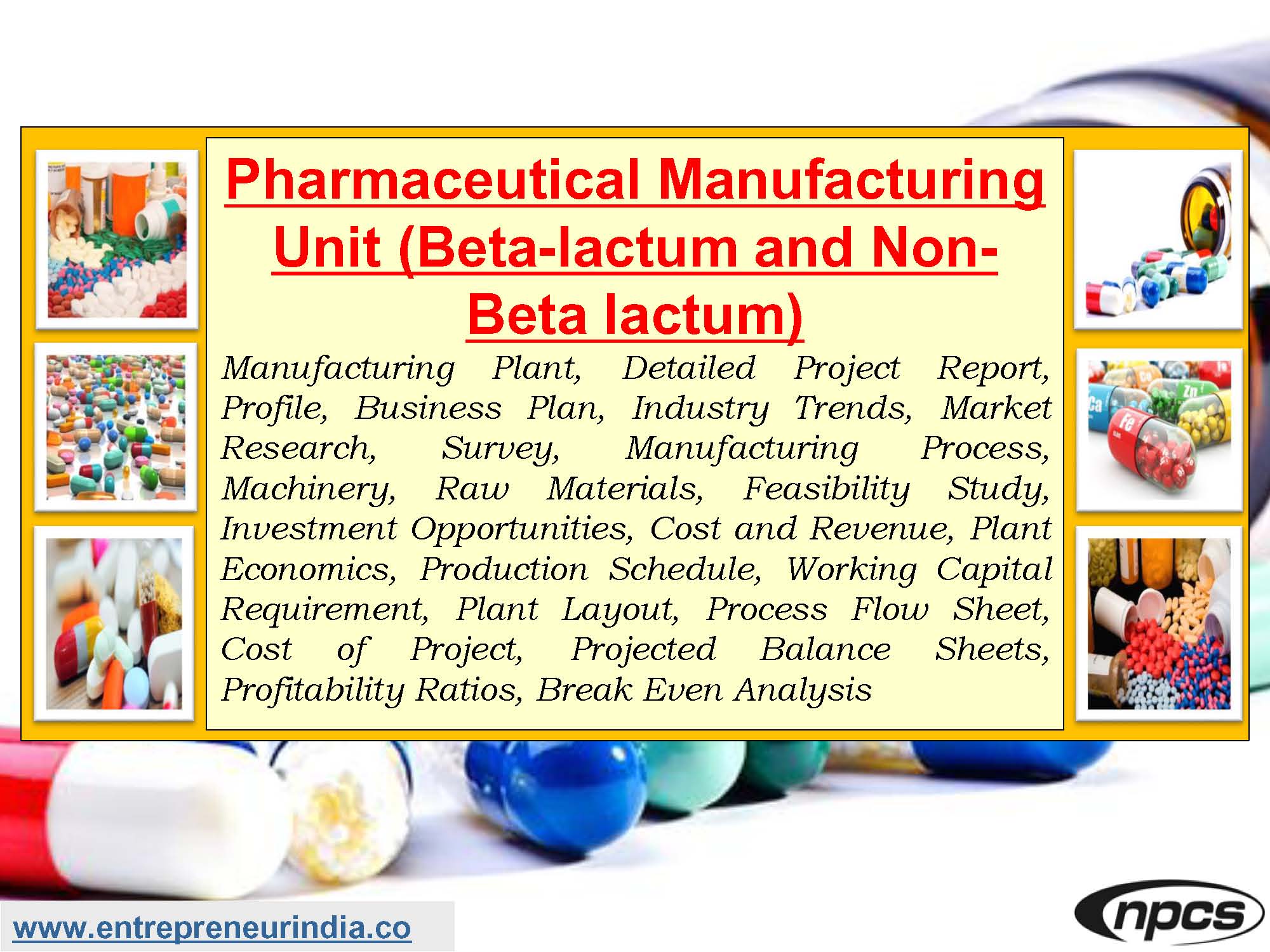
India’s pharmaceutical industry is recognized globally for its affordability, scale, and quality. As healthcare demand rises both domestically and internationally, starting a Pharma Manufacturing Unit can be a lucrative and impactful venture. From antibiotics to general medicines, pharma units play a critical role in supplying life-saving formulations. Among the most in-demand setups are Beta-Lactam and Non-Beta Lactam production lines, each requiring distinct infrastructure due to cross-contamination risks. Moreover, government support under “Make in India” and PLI schemes further strengthens opportunities for pharma entrepreneurs.
Pharma Manufacturing Unit | Beta & Non-Beta Lactam Setup
Setting up a Pharma Manufacturing Unit involves scientific planning, regulatory compliance, and investment in cleanroom-grade infrastructure. The pharmaceutical space is highly regulated to ensure product safety, efficacy, and consistency. Moreover, separate handling of Beta-Lactam and Non-Beta Lactam drugs is mandatory as they pose a risk of allergic reactions and contamination. Entrepreneurs can either manufacture under their own brand or contract manufacture for other pharma companies. With the right plant layout, certifications, and technical workforce, this industry offers strong margins and consistent demand.
See Also :Profitable Manufacturing & Processing Ideas in Jharkhand
What Are Beta-Lactam & Non-Beta Lactam Drugs?
Beta-Lactam antibiotics are a class of broad-spectrum antibiotics that include penicillins, cephalosporins, and carbapenems. These are highly sensitive and can trigger severe allergic reactions. Hence, they require isolated production areas.
In contrast, Non-Beta Lactam drugs include:
-
Antipyretics (e.g., paracetamol)
-
Anti-inflammatory drugs
-
Cardiovascular medications
-
Gastrointestinal drugs
-
Nutraceuticals and general tablets
Moreover, strict segregation ensures both product quality and regulatory approval from health authorities.
Plant Layout and Infrastructure Planning
A well-designed Pharma Manufacturing Unit requires zoning based on WHO-GMP or Schedule M norms. Key areas include:
-
Raw material storage
-
Dispensing area
-
Granulation & mixing zone
-
Compression (tablet) or filling (capsule/syrup) areas
-
Coating and packing
-
Quality Control (QC) lab
-
HVAC-controlled cleanrooms (Class 100,000 to Class 100)
-
Separate Beta & Non-Beta zones
Moreover, dedicated air handling units (AHUs), airlocks, pass boxes, and pressure differentials are essential to maintain sterility and avoid contamination.
Machinery and Equipment Requirements
Based on the dosage form and type (Beta or Non-Beta), the required equipment includes:
-
Tablet manufacturing: Rapid mixer granulator, fluid bed dryer, compression machine
-
Capsules: Automatic capsule filling machine
-
Liquid syrups: Mixing tanks, filling & capping lines
-
Ointments/creams: Ointment manufacturing vessel and tube filling machines
-
Coating & packaging: Blister packing and strip packing machines
-
Cleanroom equipment: Laminar air flow benches, air showers
Moreover, all machines must be GMP-compliant, and calibration records must be maintained regularly.
Licensing and Regulatory Approvals
Starting a Pharma Manufacturing Unit in India involves multiple layers of licensing. Mandatory approvals include:
-
Drug Manufacturing License from the State FDA
-
GMP/WHO-GMP Certification for exports or contracts
-
Factory License and Pollution Control NOC
-
GST and Udyam (MSME) Registration
-
Import-Export Code (IEC) if sourcing APIs internationally
-
CDSCO registration for formulations and bioequivalence studies
Moreover, audits by clients, state inspectors, and global bodies are frequent and must be passed with full documentation.
Staff and Technical Expertise
Qualified and trained staff are essential for successful operations. Your team should include:
-
Production Pharmacists (B.Pharm/M.Pharm)
-
QC and QA professionals
-
Microbiologists (for sterile/non-sterile testing)
-
Machine operators and maintenance staff
-
Regulatory affairs and documentation experts
Moreover, regular training programs on SOPs, GMP practices, and hygiene protocols should be implemented.
Investment and Financials
The cost of setting up a Pharma Manufacturing Unit depends on the size, type of drugs produced, and level of automation:
| Plant Type | Investment Estimate | Monthly Profit Potential |
|---|---|---|
| Small (non-beta only) | ?1 – ?2 crore | ?1 – ?2.5 lakhs |
| Medium (non-beta + beta) | ?3 – ?5 crore | ?4 – ?7 lakhs |
| Large (high-capacity + export ready) | ?6 – ?10 crore+ | ?10 – ?20 lakhs+ |
Contract manufacturing and own-brand sales both offer strong returns. Moreover, PLI schemes, cluster subsidies, and EPCG schemes can reduce capital burden.
Production Models: Own Brand vs Contract Manufacturing
There are two main ways to run a pharma unit:
-
Own Brand Manufacturing
-
Market under your own brand name
-
Higher margins, requires marketing network
-
-
Third-Party / Loan Licensing
-
Manufacture for existing brands
-
Fixed order volume, less marketing burden
-
Moreover, many units run hybrid models to maximize capacity utilization and income.
Market Scope and Growth Opportunities
The demand for quality medicines continues to grow across:
-
Domestic markets (tier 2 & tier 3 cities)
-
Government supply contracts
-
Export to Africa, Southeast Asia, Latin America
-
Institutional supply (hospitals, dispensaries)
-
Online medicine platforms and e-pharmacies
Moreover, India’s reputation as the “pharmacy of the world” offers credibility for international expansion.
Read Also :How to Manufacture Potato Flakes and Pellets
Conclusion
A Pharma Manufacturing Unit—whether focused on Beta-Lactam, Non-Beta Lactam, or both—is a high-potential, long-term business. While it requires strict compliance and upfront investment, the rewards are significant in terms of profitability, social impact, and global market access. Moreover, with India’s strategic push toward self-reliance and global healthcare leadership, pharma manufacturing remains one of the most future-proof industries for entrepreneurs.





